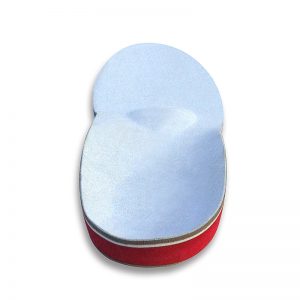ARE ORTHOTIC INSOLES EXPENSIVE?
Orthotic insoles are a common way to add support to off-the-rack shoes and provide relief from foot pain. However, with so many options on the market, it can be difficult to determine which is the best option and whether the cost of an orthotic insole is justified.
ARE ORTHOTIC INSOLES EXPENSIVE?
The price of an orthotic insole, like most things, is determined by the materials used and the product’s quality. Although low-cost insoles made of low-quality or low-cost materials may appear appealing, they are likely to wear out fast or fail to deliver on their claims. This article will provide you an overview of the many types of orthotic insoles and how much they cost.
CUSTOM ORTHOTICS: THE MOST EXPENSIVE OPTION
The most inflexible (and painful) insoles are custom orthotic insoles. They are made to order to meet a person’s individual foot problems and provide the most firm support for optimal alignment for persons with diabetes difficulties, severe pain from flat feet, and other conditions. Custom orthotic insoles will provide you with a flawless fit, but at a cost.
ARE ORTHOTIC INSOLES EXPENSIVE?
A podiatrist may prescribe custom orthotic insoles, which require further medical visits and fittings in addition to the expense of the orthotic. The price tag can be as high as $300. Some health insurance companies will cover a percentage of the expense, however orthotic insoles are not covered by all insurance plans.

The cost of custom orthotics is offset by the fact that they can last for years before needing to be replaced, making them a reasonable investment for people who actually require the specialized support.
CHEAPEST OPTION: GEL INSOLES
Gel insoles are a popular alternative for people looking for non-prescription relief from foot and joint discomfort since they are inexpensive, easy to acquire in stores, and a relatively effective non-prescription solution to deliver comfort—at least in the short term.
Gel insoles, such as the YOUR SOLE INSOLE brands, cost between $10 and $20 for a pair. They are inexpensive and feel excellent on the feet once they are in the shoe, but they do not last very long. After a few weeks of use, gel insoles begin to degrade and may only last a few months. While the price is appealing, the expense of purchasing insoles on a regular basis might quickly outweigh the cost of purchasing a higher-quality product.
A WIDE RANGE OF PRICES AND COSTS FOR FOAM INSOLES
There are a plethora of foam insoles on the market today, many of which promise long-lasting comfort at a low cost. The cost of foam insoles can range from $25 to $55. They are more expensive than a gel insole, but they are more likely to give short-term stabilizing support and low arch support for patients who suffer from foot and joint pain.
ARE ORTHOTIC INSOLES EXPENSIVE?
The quality of these insoles, on the other hand, can vary substantially. Some are built entirely of memory foam, while others feature a thin base beneath the foam for added support. Investing in a higher-quality insole will provide you with greater outcomes and more relief at a lower cost, giving cushioning for those who stand for long periods of time and stability for those who require more support.
Unfortunately, a foam insole does not last as long as a gel insole in an everyday shoe. In four to six weeks, the plastic foam will degrade, reducing the comfort and efficiency of the insole. Although a foam insole may be useful, users should weigh the expense of the insole against how long it will last.
ARE ORTHOTIC INSOLES EXPENSIVE?
MODERATE PRICE FOR LONGER-LASTING RESULTS IN SEMI-RIGID ORTHOTIC INSOLES
Semi-rigid orthotic insoles range in price from $50 to $100, and while they are more expensive than foam alone, they are built of a harder material that lasts longer. Semi-rigid orthotic insoles are also the best value for money. SelectFlex (pictured below), for example, costs one-quarter the price of medical orthotics and provides dynamic arch support and energy return. For added comfort, it comes with a medical-grade footbed. A medical quality footbed is recommended not just for comfort, but also because it is durable enough to last and not break down after a few months of use.
If cushioning and comfort are important to you, certain semi-rigid orthotics have a foam top layer that gives cushioning while simultaneously providing firm arch support and stability to ease chronic foot discomfort.
ARE ORTHOTIC INSOLES EXPENSIVE?
If you suffer from overpronation of the foot, search for an insole with a medical-grade shell and a deep heel cup to guarantee normal foot alignment while walking. Look for a semi-rigid insole with an adjustable arch for persons with flat feet, high arches, or foot pain conditions like plantar fasciitis so you may modify your degree of comfort. An adjustable arch, also known as a dynamic arch, is beneficial to anyone who requires varied amounts of support depending on the activity or has had difficulty finding an insole that provides adequate arch support.
A semi-rigid insole can give you the best of both worlds for a reasonable price, with cushioning comfort, arch support, and high-tech materials that return energy to your foot with each step, minimizing pain and allowing you to stay on your feet longer.
